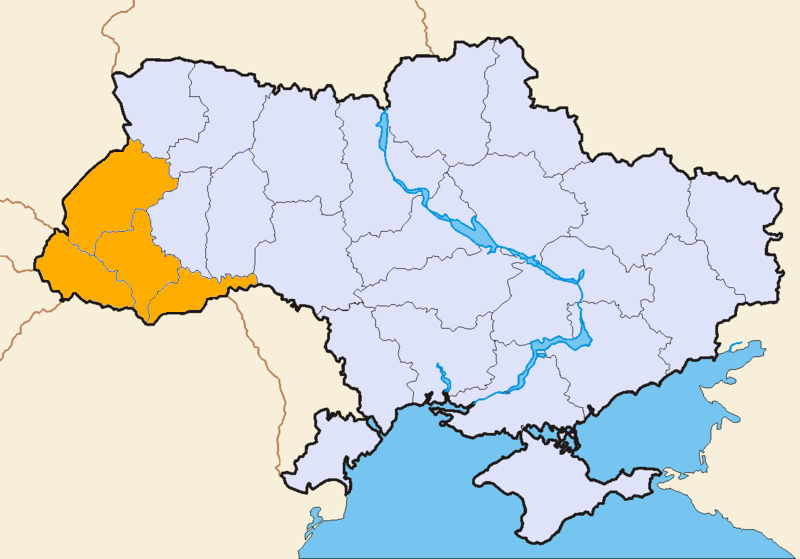|
Svydovets
The Svydovets ( Ukrainian Свидовець; Polish ''Świdowiec''; Czech and Slovak ''Svidovec''; German ''Swydiwez'') is a mountain range in western Ukraine, one of the ranges of Eastern Beskids, itself belonging to the Outer Eastern Carpathians. It is a biodiversity hotspot in the Ukrainian Carpathians. The territories of the Svydovets mountain range belong to the state. The highest peak of the range is Blysnyzi mountain (1883 m). The ''Black Tisza'', the source of Tisza, is one of the more fullflowing rivers of the region, it flows out from the Svydovets. Flora and fauna The Svydovets is home to 42 plant species and 51 animal species that are listed in the Red Data Book of Ukraine as endangered. The red-listed plant species include the Rhodiola rosea, the Carpathian saxifrage, the fir clubmoss ( Huperzia selago), and the stiff clubmoss (Lycopodium annotinum). The endangered animal species include the European brown bear, the Eurasian lynx, the black grouse, and the Eur ... [...More Info...] [...Related Items...] OR: [Wikipedia] [Google] [Baidu] |
Svydovets Protected Massif
Svydovets protected massif is a protected area in the Ukrainian Carpathians near Rakhiv in the Zakarpattya region. The protected massif has an area of and is located at an elevation of 600–1883 m.a.s.l. in the highest region of the Svydovets mountain range. Status Svydovets protected massif is included in the Carpathian Biosphere Reserve, that is part of the World Network of Biosphere Reserves of UNESCO. It is listed with the UNESCO World Heritage Sites as part of the Ancient and Primeval Beech Forests of the Carpathians and Other Regions of Europe. It is protected under the Emerald Network of environmentally important conservation areas established by the Council of Europe. The Natura 2000 network apply there. See also * List of World Heritage Sites in Ukraine The United Nations Educational, Scientific and Cultural Organization (UNESCO) designates World Heritage Sites of outstanding universal value to cultural or natural heritage which have been nominated by ... [...More Info...] [...Related Items...] OR: [Wikipedia] [Google] [Baidu] |
Outer Eastern Carpathians
Divisions of the Carpathians are a categorization of the Carpathian mountains system. Below is a detailed overview of the major subdivisions and ranges of the Carpathian Mountains. The Carpathians are a "subsystem" of a bigger Alps-Himalaya System that stretches from western Europe all the way to southern Asia, and are further divided into "Geologic province, provinces" and "subprovinces". The last level of the division, i.e. the actual mountain ranges and basins, is usually classified as "units". The main divisions are shown in the map on the right. To generalize, there are three major provinces (regions): Western Carpathians, Eastern Carpathians, and the Southern Carpathians. Naming conventions The division is largely (with many exceptions) undisputed at the lowest level (except for the Ukraine, Ukrainian part), but various divisions are given for the higher levels, especially for the penultimate level. A geomorphology, geomorphological division has been used as much as t ... [...More Info...] [...Related Items...] OR: [Wikipedia] [Google] [Baidu] |
Vorozheska
Lake Vorozheska ( Ukrainian: озеро Ворожеська) is the lake in the Carpathian Mountains of Ukraine. It is a hydrological natural monument of local significance. Lake Vorozheska is located on the northern slopes of the Svydovets massif at an elevation of 1460 meters above sea level. It has glacial origin and is situated in a cirque. The lake consists of two connected bodies of water, a bigger and a smaller one. The water of the lake is clear and cool. Thickets of juniper and blueberry Blueberries are a widely distributed and widespread group of perennial flowering plants with blue or purple berries. They are classified in the section ''Cyanococcus'' with the genus ''Vaccinium''. Commercial blueberries—both wild (lowbush) ... grow around it. References {{Authority control Lakes of Ukraine Protected areas of Ukraine Tourist attractions in Zakarpattia Oblast ... [...More Info...] [...Related Items...] OR: [Wikipedia] [Google] [Baidu] |
Ukrainian Carpathians
The Ukrainian Carpathians () are a section of the Eastern Carpathians, within the borders of modern Ukraine. They are located in the southwestern corner of Western Ukraine, within administrative territories of four Ukrainian regions (oblasts), covering northeastern part of Zakarpattia Oblast, southwestern part of Lviv Oblast, southern half of Ivano-Frankivsk Oblast and western half of Chernivtsi Oblast. They are stretching in a general northwest–southeast direction, starting at the tripartite border point of Ukraine with Poland and Slovakia, and continuing towards the Ukrainian border with Romania. In terms of geological classification, Ukrainian Carpathians belong to two distinctive categories, with the major part belonging to the Outer Eastern Carpathians and the minor part to the Inner Eastern Carpathians. Within different regional and national traditions, there are several overlapping variants of divisions and designations for various Eastern Carpathian mountain ... [...More Info...] [...Related Items...] OR: [Wikipedia] [Google] [Baidu] |
Eastern Beskids Of The Outer Eastern Carpathians
The Eastern Beskids or Eastern Beskyds (; ; ; ) are a geological group of mountain ranges of the Beskids, within the Outer Eastern Carpathians. As a continuation of the Central Beskids, this mountain range includes the far southeastern corner of Poland, the far eastern corner of Slovakia, and stretches southward through western parts of Ukraine, up to the border of Romania. In Polish and Ukrainian terminology, the range is commonly called the "Eastern Beskids" (; ), while in Slovakia, the term ''Meadowed Mountains'' () is also used. The scope of those terms varies in accordance to different traditions and classifications. At the three-way border, portions of the Slovak Bukovec Mountains (), the Polish Bieszczady Mountains (), and the adjacent Uzh National Nature Park, "Uzhanskyi National Nature Park" and Nadsianskyi Regional Landscape Park in Ukraine form the transnational East Carpathian Biosphere Reserve. Subdivisions The Eastern Beskids are commonly divided into two par ... [...More Info...] [...Related Items...] OR: [Wikipedia] [Google] [Baidu] |
Zakarpattia Oblast
Zakarpattia Oblast (Ukrainian language, Ukrainian: Закарпатська область), also referred to as simply Zakarpattia (Ukrainian language, Ukrainian: Закарпаття; Hungarian language, Hungarian: ''Kárpátalja'') or Transcarpathia in English, is an Administrative divisions of Ukraine, oblast located in the Carpathian Mountains in west Ukraine, mostly coterminous with the historical region of Carpathian Ruthenia. Its Capital (political), administrative centre is the city of Uzhhorod. Other major cities within the oblast include Mukachevo, Khust, Berehove, and Chop, Ukraine, Chop, the last of which is home to railroad transport infrastructure. Zakarpattia Oblast was established on 22 January 1946, after Third Czechoslovak Republic, Czechoslovakia gave up its claim to the territory of Carpathian Ruthenia, Subcarpathian Ruthenia (Czech language, Czech and also Slovak language, Slovak: Podkarpatská Rus) under a treaty between Czechoslovakia and the Soviet Union. ... [...More Info...] [...Related Items...] OR: [Wikipedia] [Google] [Baidu] |
Council Of Europe
The Council of Europe (CoE; , CdE) is an international organisation with the goal of upholding human rights, democracy and the Law in Europe, rule of law in Europe. Founded in 1949, it is Europe's oldest intergovernmental organisation, representing 46 member states from Europe, with a population of approximately 675 million ; it operates with an annual ordinary budget of approximately 500 million euros. The organisation is distinct from the European Union (EU), although people sometimes confuse the two organisations – partly because the EU has adopted the original Flag of Europe, European flag, designed for the Council of Europe in 1955, as well as the Anthem of Europe, European anthem. No country has ever joined the EU without first belonging to the Council of Europe. The Council of Europe is an official United Nations General Assembly observers, United Nations observer. Unlike the EU, the Council of Europe cannot make binding laws; however, the council has produced a numbe ... [...More Info...] [...Related Items...] OR: [Wikipedia] [Google] [Baidu] |
Emerald Network
The Emerald network is a network of Areas of Special Conservation Interest to conserve wild flora and fauna and their natural habitats of Europe, which was launched in 1989 by the Council of Europe as part of its work under the Berne Convention on the Conservation of European Wildlife and Natural Habitats that came into force on 1 June 1982. It is to be set up in each Contracting Party or observer state to the convention. The Bern Convention is signed by the 46 member states of the Council of Europe, together with the European Union, Monaco, Burkina Faso, Morocco, Tunisia and Senegal. Algeria, Belarus, Bosnia and Herzegovina, Cape Verde, Vatican City, San Marino and Russia are among non-signatories that have observer status at meetings of the committee. The European Union, as such, is also a Contracting Party to the Bern Convention. In order to fulfil its obligations arising from the convention, particularly in respect of habitat protection, it produced the Habitats Directive in ... [...More Info...] [...Related Items...] OR: [Wikipedia] [Google] [Baidu] |
Black Grouse
The black grouse (''Lyrurus tetrix''), also known as northern black grouse, Eurasian black grouse, blackgame or blackcock, is a large Aves, bird in the grouse family. It is a Bird migration, sedentary species, spanning across the Palearctic in moorland and steppe habitat when breeding, often near wooded areas. They will spend the winter perched in dense forests, feeding almost exclusively on the needles of conifers. The black grouse is one of two species of grouse in the genus ''Lyrurus'', the other being the lesser-known Caucasian grouse. The female is greyish-brown and has a cackling or warbling call. She takes all responsibility for nesting and caring for the chicks, as typical with most Galliformes, galliforms. The black grouse's genome was sequenced in 2014. Taxonomy and naming The black grouse was Species description, formally described by the Swedish naturalist Carl Linnaeus in 1758 in the 10th edition of Systema Naturae, tenth edition of his ''Systema Naturae'' under th ... [...More Info...] [...Related Items...] OR: [Wikipedia] [Google] [Baidu] |
Natura 2000
Natura 2000 is a network of nature protection areas in the territory of the European Union. It is made up of Special Areas of Conservation and Special Protection Areas designated under the Habitats Directive and the Birds Directive, respectively. The network includes both terrestrial and Marine Protected Areas. The Natura 2000 network covered more than 18% of the European Union's land area and more than 7% of its marine area in 2022. History In May 1992, the governments of the European Communities adopted legislation designed to protect the most seriously threatened habitats and species across Europe. The Habitats Directive complements the Birds Directive adopted in 1979, and together they make up the Natura 2000 network of protected areas. The Birds Directive requires the establishment of Special Protection Areas for birds. The Habitats Directive similarly requires Sites of Community Importance which upon the agreement of the European Commission become Special Areas o ... [...More Info...] [...Related Items...] OR: [Wikipedia] [Google] [Baidu] |
Illegal Logging
Illegal logging is the harvest, transportation, purchase, or sale of timber in violation of laws. The harvesting procedure itself may be illegal, including using corrupt means to gain access to forests; extraction without permission, or from a protected area; the cutting down of protected species; or the extraction of timber in excess of agreed limits. Illegal logging is a driving force for a number of environmental issues such as deforestation, soil erosion and biodiversity loss which can drive larger-scale environmental crises such as climate change and other forms of environmental degradation. Illegality may also occur during transport, such as illegal processing and export (through smuggling, fraudulent declaration to customs); the tax avoidance, avoidance of taxes and other charges, and fraudulent certification. These acts are often referred to as "wood laundering". Illegal logging is driven by a number of economic forces, such as demand for raw materials, land grabbing and ... [...More Info...] [...Related Items...] OR: [Wikipedia] [Google] [Baidu] |






